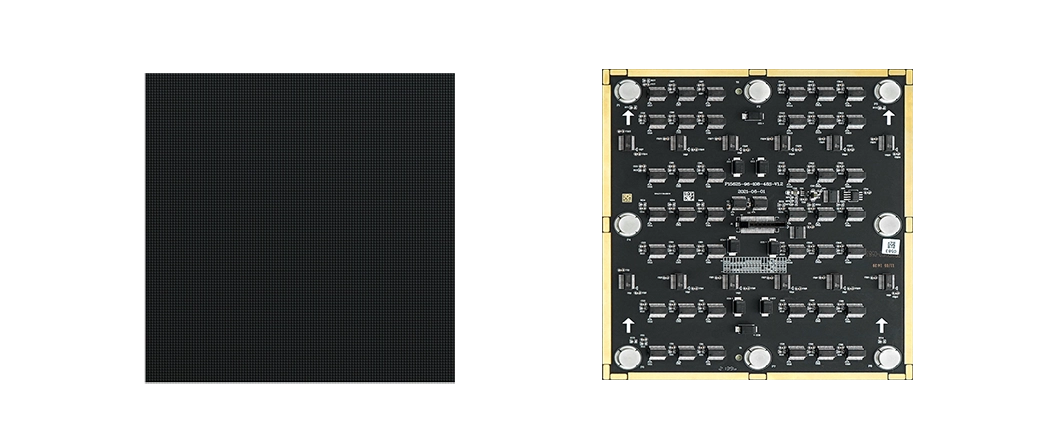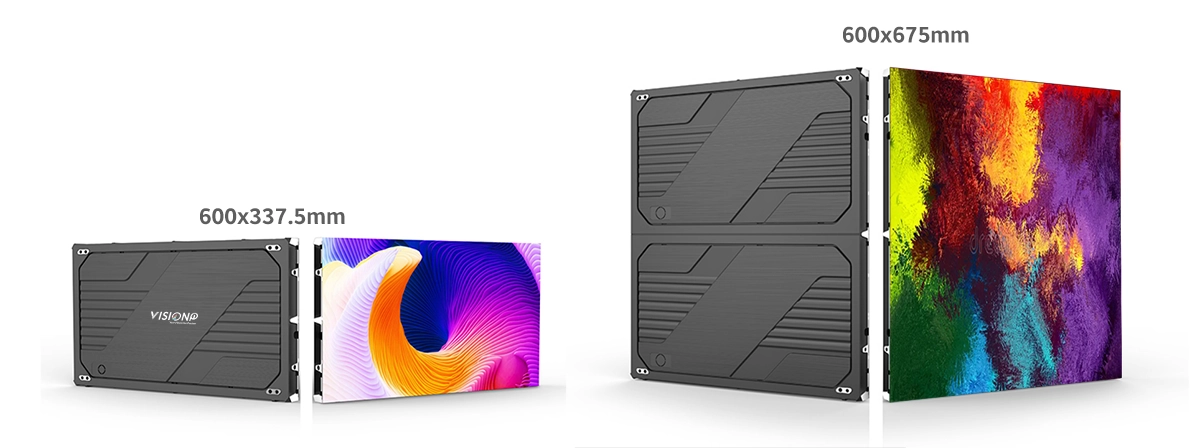Virtual Pixel COB LED Display
What is Virtual Pixel Technology
Virtual Pixel Technology,also called dynamic pixel technology, is a technique that uses software algorithms to control the LED units in a display, so that each unit can contribute to the image of multiple pixels, thus increasing the resolution of the display by up to four times. It is different from the real pixel, where each unit corresponds to one pixel.
For example, a conference all-in-one machine that uses Virtual Pixel Technology can achieve a near 4K resolution with the same number of LED units as a 2K resolution machine. This improves the display quality and uniformity, while reducing the cost. It is a good choice for most users who want a high-definition display.
Virtual pixel Micro COB LED Display
Virtual Pixel Technology is also a special innovation for COB packaging, which allows the RGB LED chips to be arranged in any way, unlike the SMD small pitch display technology.
Virtual pixel display technology is a new way of making Micro LED display products that are more cost-effective and high-resolution. It uses a different hardware and software design than the traditional RGB arrangement of LED chips. Instead, it adds a green LED chip to each pixel and uses a special algorithm to create four virtual pixels from one physical pixel. This reduces the pixel pitch by half and increases the resolution by four times, while using fewer LED chips and lowering the production cost. Virtual Pixel-COB display technology is an innovative and advanced solution.
Advantages of COB Virtual Pixel Technology
“Virtual pixel technology can make LED display screens have more than twice the visual clarity at almost the same cost. It is a magic tool for making LED display screens more affordable and high-quality!” Industry experts said that virtual pixel technology is very important for LED direct display, which is a type of display that becomes harder and more expensive to make as the pixel pitch gets smaller.
Take the most popular product,p1.56 136-inch all-in-one LED TV, for example. the 5 square meters LED display only has a 2K resolution, which is not enough for displaying 4K and other high-quality content. It also has a noticeable “pixelation” problem when viewed from a closer distance.
Virtual pixel technology can solve this problem by increasing the logical pixels in the resolution to 4K levels, with only a small increase in cost. This means that the screen can look much clearer and sharper, even though it is not using real physical 4K pixels. Virtual pixel technology is a cost-effective, reliable, and mature technology that can enhance the picture quality of LED direct display screens.

Dynamic Pixel COB LED Display
Disadvantages of Virtual pixel COB.
Dynamic pixel technology is not a perfect solution for Micro LED display products.
-
The inherent nature of pixel sharing in virtual pixel technology can lead to a degradation in display quality as the level of virtual enhancement increases. Observations from current display implementations indicate that, at closer viewing distances, the imagery may present a granular appearance, with static text particularly susceptible to displaying jagged edges. This has sparked some skepticism within the market, with critiques suggesting that virtual pixel products might mislead consumers. Such sentiments contribute to a lack of enthusiasm and support for the technology.
- It does not use real physical pixels, so it may not work well in some situations. It also makes the chip work harder and faster, which may cause it to wear out sooner and decrease the life span.
Dynamic Pixel COB LED Display for Commercial Advertising
From an objective standpoint, virtual pixel technology does exhibit tangible limitations in image fidelity. Beyond a certain proximity, distinguishing between the effects of virtual and actual pixels becomes challenging for the observer. However, it’s important to consider the technology’s application context. Beyond specialized domains such as command and control centers or medical imaging, where precise visual detail is paramount, the demand for high-fidelity close-viewing experiences in settings like conference rooms and commercial spaces is relatively modest. These environments represent the niche where virtual pixel technology can indeed shine, leveraging its capabilities where they align with the practical requirements of the application.
Advantages of Virtual cob led display in commercial advertising
Cost-Effectiveness: By requiring fewer physical pixels to achieve high resolutions, dynamic pixel COB LED displays significantly reduce manufacturing and operational costs. This makes them an economically viable option for businesses seeking high-quality advertising solutions without the high expense typically associated with large or high-resolution digital screens.
Energy Efficiency: Lower pixel density translates to less energy consumption, as fewer LEDs are needed to create an image. This energy efficiency not only reduces operational costs but also aligns with growing environmental sustainability goals among corporations.
Durability and Reliability: COB technology inherently offers greater protection for LED chips, as they are encapsulated directly on the board. This encapsulation provides superior resistance to impact, moisture, and dust, extending the lifespan of the display and ensuring consistent performance in various commercial settings.
Versatility and Visual Quality: Dynamic pixel COB LED displays can adapt to a wide range of commercial advertising needs, from outdoor billboards to indoor signage. They offer excellent visual quality, with vibrant colors and deep contrasts, making them highly effective for capturing consumer attention in competitive advertising environments.
Future Outlook
When we want to make display screens with very high resolution, like 4K or 8K, it becomes very hard and expensive to do. Also, when we look at the screens from a normal distance, like how we use our phones or watch TV, we cannot see the difference between more or less pixels. So, it does not make sense to keep adding more pixels to the screens. Instead, we should make products that look good and clear to our eyes. That is why virtual pixel technology is very popular. It makes the screens look better without using too many pixels.
The future of commercial advertising with dynamic pixel COB LED technology appears bright, with continuous advancements expected to further enhance resolution, cost-efficiency, and application versatility. As businesses increasingly seek innovative ways to engage with audiences, dynamic pixel COB LED displays stand out as a promising solution that balances cost, performance, and visual appeal. Their adaptability and efficiency position them as a preferred choice for advertisers aiming to make a significant impact in a crowded market.
Virtual Pitch COB LED Display Modules: Pixel pitch covers P0.4-P1.8 .
- 600-1,200nits brightness
- 18Bit grayscale
- up to100,000:1 contrast ratio
- HDR 10 supported
- 120% NTSC color gamut
- 7,680Hz refresh rate
- Extremely high protection performance
- Single Module Calibration Technology
- onforms to industry standards and specifications
- Self-developed optical display technology greatly protects the eyes
- Multi-scene applicability


